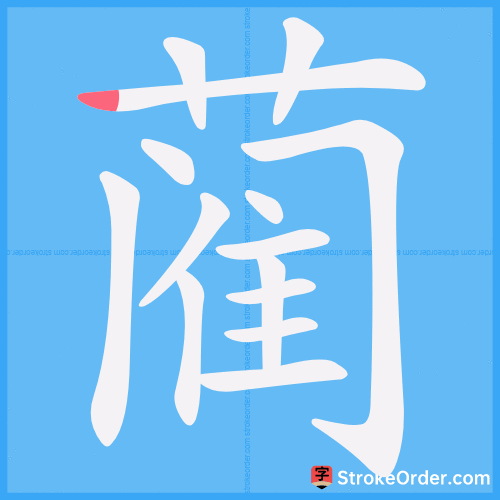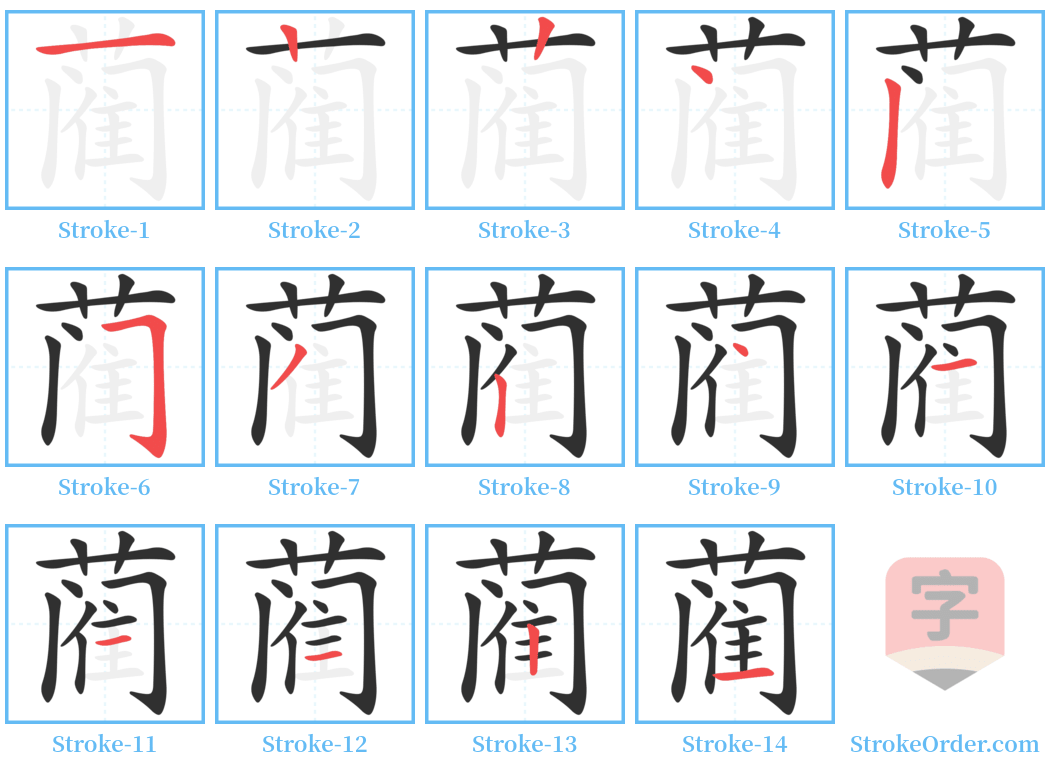蔺 Stroke Order
Animated Stroke Order of 蔺

Stroke Order Diagrams for 蔺

Step-by-Step Handwriting Guide for 蔺

Learn to Write Chinese Characters with Video Tutorials
Watch the video of writing the Chinese character "蔺", learn the correct stroke order (笔顺) of the character "蔺", and master the standard way of writing the character "蔺".
Free Printable Handwriting Practice with Stroke Order: 蔺
Printable Writing Practice Worksheet of "蔺" in Portrait Orientation (Tian Zi Ge)

Printable Writing Practice Worksheet of "蔺" in Landscape Orientation (Tian Zi Ge)

Information of 蔺
Pinyin
lìn
Radical
艹
Strokes
14 strokes
Usage
★★★★
Definition
juncus effusus
蔺
lìn
〈名〉
1. A perennial herb, also known as 马蔺 (Chinese iris). It has a thick rhizome and linear leaves, with blue-purple flowers. The leaves are tough and can be used for tying objects, as well as for making paper. The roots can be used to make brushes.
(English: A type of perennial herb, also known as Chinese iris, with coarse rhizomes, linear leaves, and blue-purple flowers. The leaves are tough and can be used for tying, as well as for paper-making. The roots can be made into brushes.)
引:
1. 《说文》: 蔺, 莞属, 从草, 闵声.
(Reference: "Shuowen Jiezi": 林, a plant of the reed family, comes from grass, with the sound 'min'.)
2. 《急就篇》: 蔺席.
(Reference: "Jijiu Pian": Lin mat.)
2. A borrowing for "棱" ([En.] ridge; edge).
(English: A borrowing for "ridge; edge.")
引:
1. 《汉书·晁错传》: 具蔺石. 如淳注: "城上雷石也."
(Reference: "Han Shu, Biography of Chao Cuo": Contains Lin stones. As Chun notes: "Stones on the city.")
3. A homophone of "躏" (to trample).
(English: A homophone of "trample.")
引:
1. 《汉书·司马相如传》: 徒车之所蔺轹.
(Reference: "Han Shu, Biography of Sima Xiangru": Where the cart tramples.)
4. A surname.
(English: A surname.)
Input Method for 蔺
Pinyin
lin4
Wubi
auwy
Cangjie
tlsg
Zhengma
etni
Four Corner
44227
Unicode
U+853a
Same Pronunciation Characters